We braved the cold and strong winds and visited several places in Berlin. But first, let’s talk about our hotel and Checkpoint Charlie. We stayed at the Mercure Hotel and Residenz Berlin Checkpoint Charlie. It is a nice hotel, in a good location, and just around the corner from Checkpoint Charlie. We recommend it.
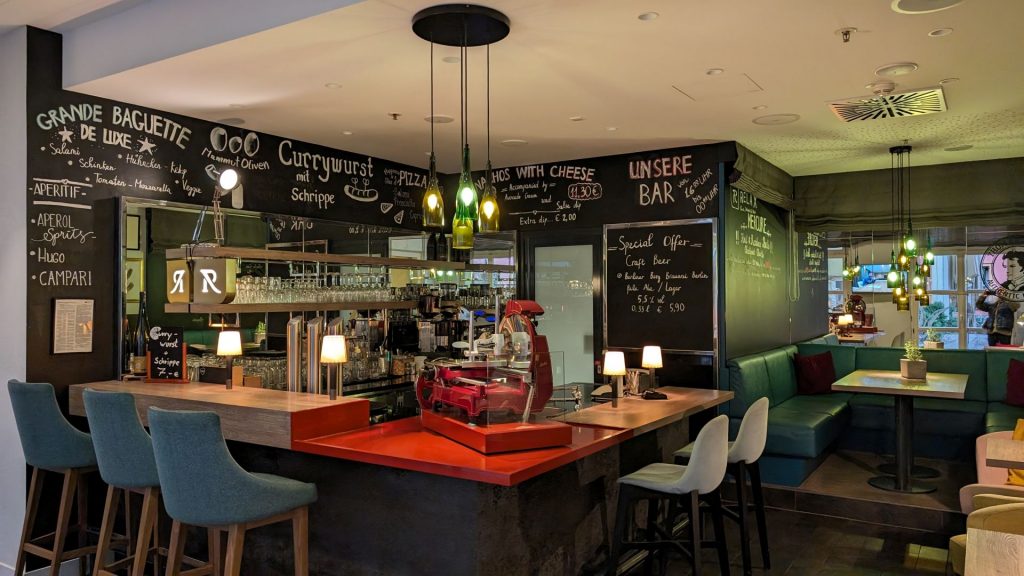
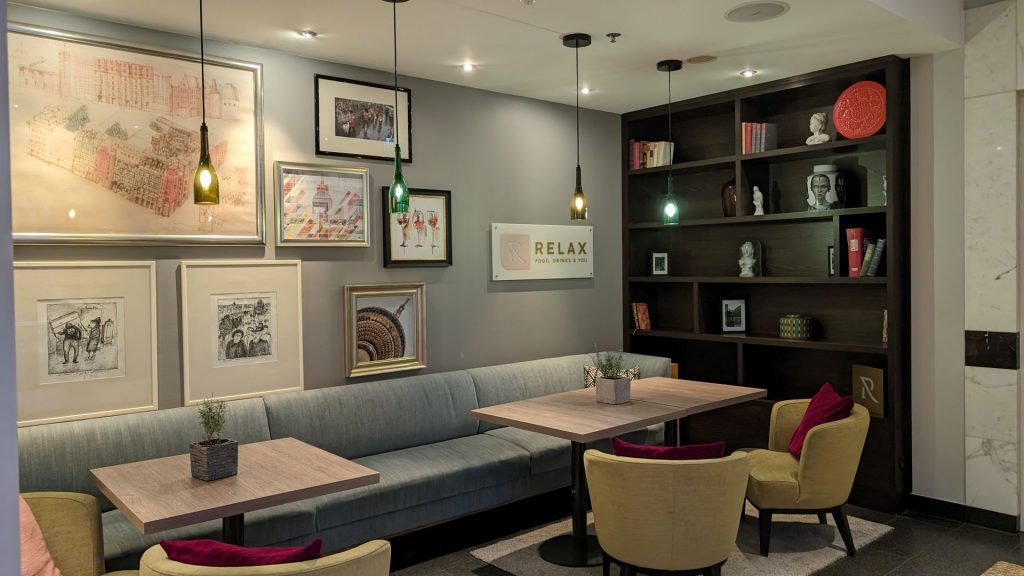
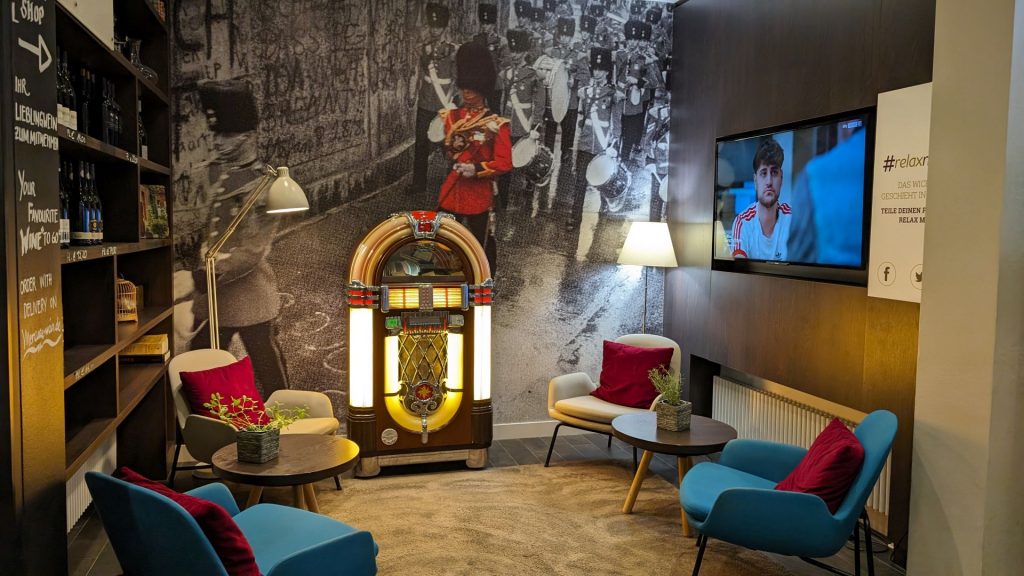
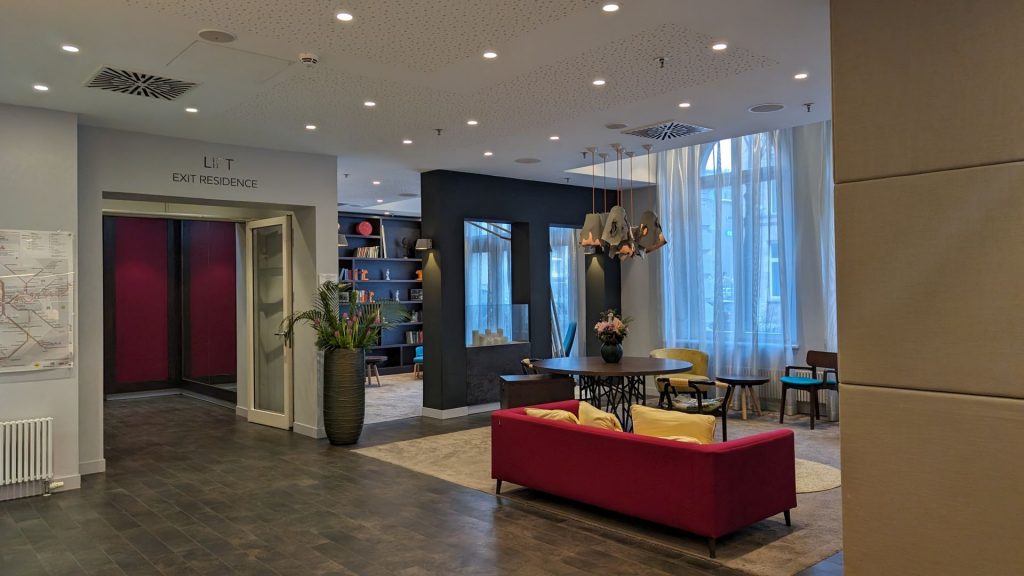
For those who need a refresher, Checkpoint Charlie was the best-known border crossing between East and West Berlin during the Cold War. It became a symbol of the Cold War, representing the separation of East and West.
When Berlin was divided into East and West, the former military checkpoint was controlled by the Americans. Only foreigners, employees of the Permanent Mission of the Federal Republic of Germany in the GDR, and GDR officials were allowed to cross the border here.
Important Site of the Cold War
There was hardly any other place where the atmosphere of the Cold War was as frosty as at Checkpoint Charlie. The border crossing gained notoriety in October 1961 after the construction of the Berlin Wall: in the last days of October, American and Soviet tanks took up positions here after members of the US mission were asked to identify themselves at the GDR border post when passing through the Allied checkpoint. Soviet and Allied tanks faced each other with live ammunition and a third world war almost ensued. In the years that followed, the checkpoint was the scene of spectacular escapes which often ended in death.
Here it is today! The “sandbags” are made of cement.
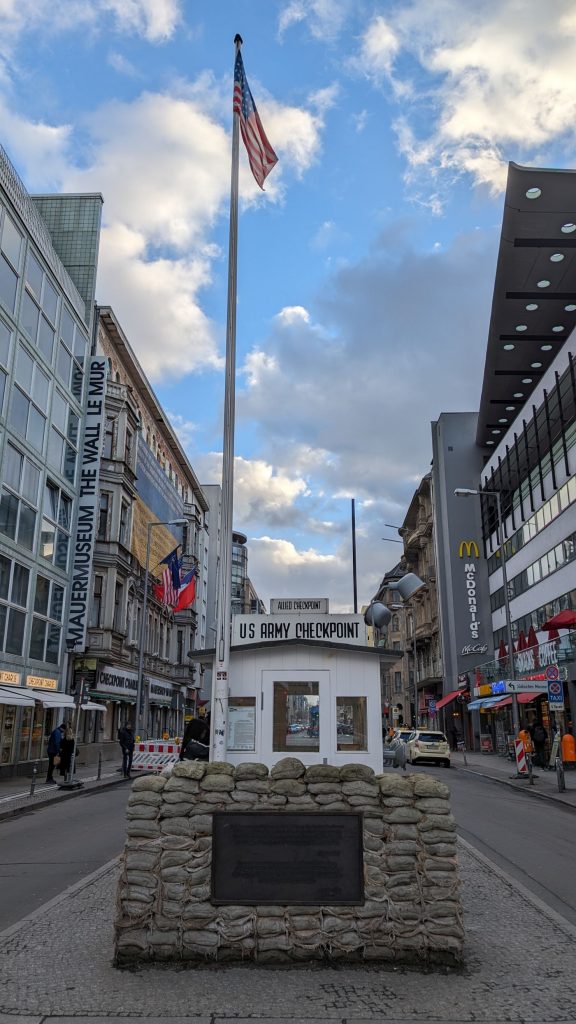
I bought this cup at the museum you see in the picture. It isn’t glass or ceramic so it should last on Seahike, unlike the glass glasses we foolishly brought onboard.
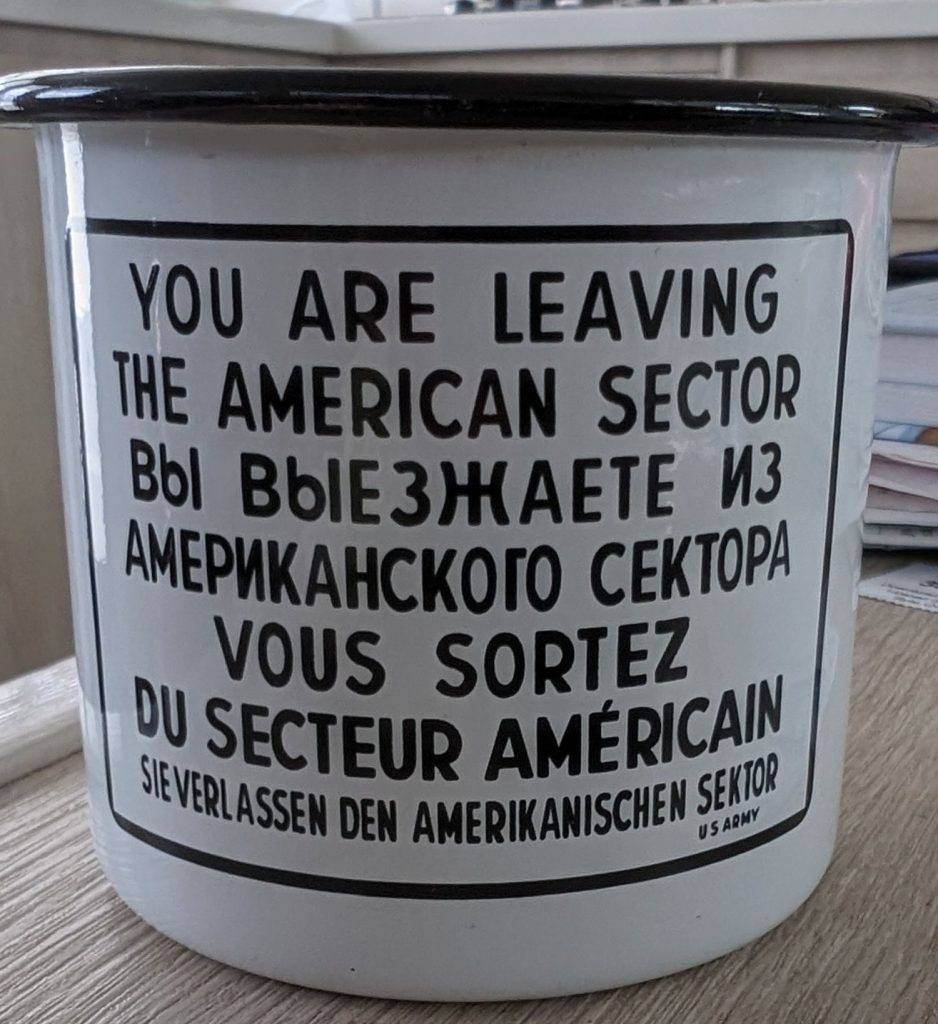
The Berlin Wall Memorial
The Berlin Wall Memorial, situated right at the heart of the city, is the main memorial site dedicated to the division of Germany. It covers 1.4 kilometers of the former no man’s land along Bernauer Strasse. The Wall on Bernauer Strasse was just a part of a 155-kilometer-long border that went all around West Berlin from August 13, 1961 to November 9, 1989.
After World War II ended in 1945, the SED, the state party of the GDR, established a dictatorship in East Germany with the support of the Soviet occupying power. A large part of the East German population did not agree with the new political and economic system. By the late 1940s, a mass migration to the West was underway. People had different reasons – political, economic and personal – for wanting to leave. By August 1961, the GDR had lost a sixth of its population – at least four million people. The SED had already closed off East Germany’s border with West Germany in 1952, making it increasingly dangerous to cross there. But the sector borders in Berlin remained open, leading many to try to reach West Germany through this last opening.
On August 13, 1961, the SED began to seal off the borders around West Berlin, first with barbed wire and a few days later with walls. It hoped this measure would put an end to the mass exodus to Berlin. It also wanted to stabilize its power and document its sovereignty to the outside world. But not even barbed wire and the Wall could stop people from fleeing. The Wall also had to be guarded by armed soldiers who were ordered to use their weapons if they were otherwise unable to stop the escape. In the West, this was referred to as the “order to shoot.”
Many people lost their lives at the GDR border due to firearms. Of the 140 (some sources list 136) total deaths that occurred at the Berlin Wall between 1961 and 1989, 91 of the victims – mostly people trying to flee – had been shot by GDR border soldiers. The efforts to perfect the border fortifications in Berlin continued until 1989. The order to shoot was not lifted until April 1989. In 1989, the Wall that the SED had used for so long to maintain its power in the GDR, fell. With the fall of the Wall, the dictatorship came to its definitive end.
The memorial site is home to the final section of the Berlin Wall with the preserved grounds behind it, conveying an impression of the border fortifications in place up to the end of the 1980s.
The history of Germany’s division is brought to life by the other remains and border fortifications as well as retellings of the dramatic events that took place here. Across the site, there are themed stations featuring photos, videos and audio recordings telling the story of a divided nation.
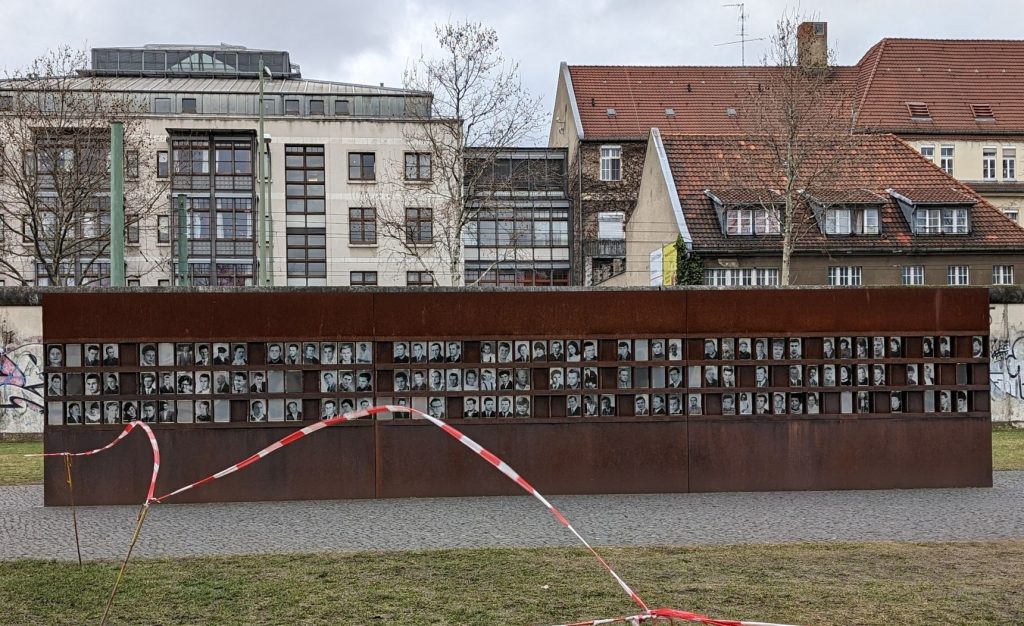
The Reichstag Building
I am going to start these next two sections by admitting that I have no recollection of learning about the Reichstag building or the Brandenburg Gate. Perhaps it is because of this that I find the history so fascinating now.
I think it is fair to say that the Reichstag building is primarily known for its architecture and history. It is currently the meeting place of the Bundestag, the lower house of Germany’s national legislature. It is one of Berlin’s most famous landmarks.
The Neo-Renaissance building was designed by Paul Wallot and was completed in 1894. It was the home of the Reichstag from 1894 to 1933, during the periods of the German Empire (1871–1918) and the Weimar Republic (1919–33). A fire at the Reichstag on February 27, 1933, one month after Adolf Hitler assumed the chancellorship, triggered events that led to Hitler’s assumption of dictatorial powers in Germany. The Nazi leadership and its coalition partners used the fire to claim that Communists were planning a violent uprising. They claimed that emergency legislation was needed to prevent this. The resulting act, commonly known as the Reichstag Fire Decree, abolished a number of constitutional protections and paved the way for Nazi dictatorship. Implemented one day after the fire, the decree suspended the right to assembly, freedom of speech, freedom of the press, and other constitutional protections, including all restraints on police investigations. It remained in effect until Nazi Germany was defeated in May 1945.
–The decree permitted the regime to arrest and incarcerate political opponents without specific charge, to dissolve political organizations, and to confiscate private property.
–The decree also gave the regime the authority to overrule state and local laws and overthrow state and local governments.
The disused building sustained heavy damage from Allied bombing during the Second World War. Seizing the building was one of the last battles in the conquest of Berlin. Assaulting the iconic building on April 30, 1945, two Soviet soldiers raised the Soviet flag on the Reichstag building.
Since 1994, the building has been rebuilt and renovated according to plans by star architect Norman Foster. (This information didn’t seem to fit anywhere so I threw it in here, in chronological order.)
The Bundestag sat in Bonn from 1949 to 1999. After the division of the city, the Reichstag building, which was located in the British sector, soon became a symbol of German unity. For that reason the Bundestag decided to maintain the Reichstag building. Reopened in 1999, the Reichstag now functions as a seat of the federal German parliament (as noted at the beginning of this section).
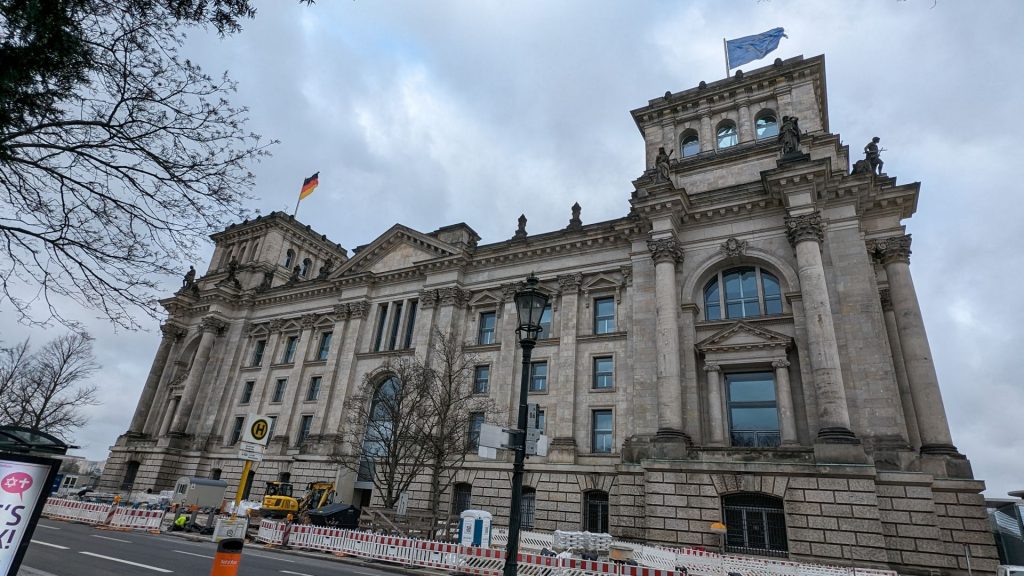
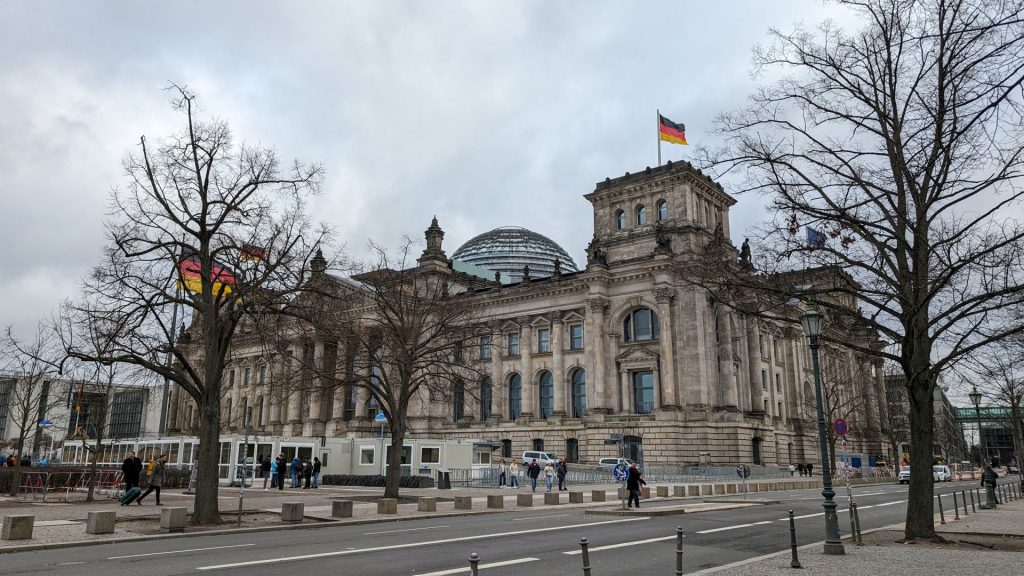
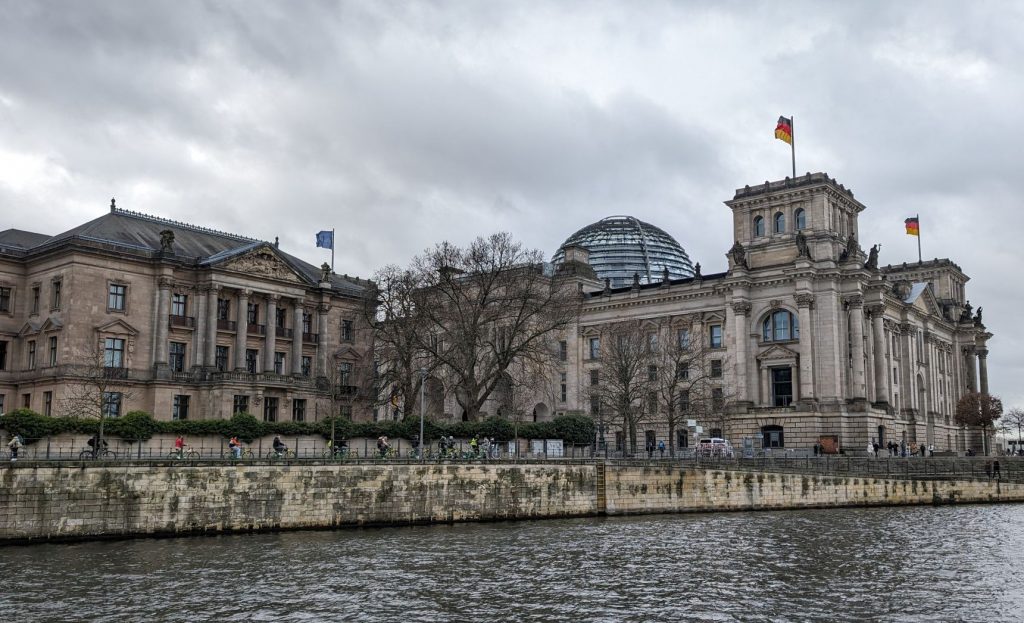
On another note: The building became the focus of the art world in June 1995 when it was wrapped in more than one million square feet of silver fabric by the environmental sculptors Christo and Jeanne-Claude. The installation is regarded as one of Christo and Jeanne-Claude’s most ambitious projects.

The Brandenburg Gate
The Brandenburg Gate is one of the most iconic sights in Berlin. More than just Berlin’s only surviving historical city gate (there were once 18), this site came to symbolize Berlin’s Cold War division into East and West – and, since the fall of the Wall, a reunified Germany.
Throughout its existence, the Brandenburg Gate was often a site for major historical events and is today considered not only a symbol of the tumultuous histories of Germany and Europe, but also of European unity and peace.
King Friedrich Willhelm II commissioned the gate to mark the end of the Unter den Linden boulevard, which led to the Prussian palace. It officially opened on August 6, 1791.
When King Friedrich built the gate, it symbolized peace. In the twentieth century, in the years leading up to World War II it became a party symbol, hosting large-scale propaganda events that tightened Nazi control over Germany. Then, in the decades following the war, it became another symbol of the great divide between the great capital city. In 1945, authorities added the Soviet Flag to the gate but eventually replaced it with the East German flag in 1957.
Fun fact: Napoleon was the first person to use it for a procession
After Napoleon defeated the Prussians in 1806 at the Battle of Jena-Auerstedt, he proudly rode through the gate on a triumphal procession. He took the Quadriga to Paris but returned it after defeat in 1814. Karl Friedrich Schinkel redesigned the Quadriga as a Prussian triumphal arch, depicting the goddess of victory on a chariot pulled by four happy horses.
Fun fact: In 1961, steps from the Brandenburg Gate, Kennedy made his “I am a Berliner Speech.”
The entire structure was heavily damaged during World War II. Holes punctuated the columns and only one horse’s head from the quadriga survived. The original horse’s head is housed in the Märkisches Museum. It was restored in 1957–58, with the quadriga recast from the original molds. The Brandenburg Gate then closed in 1961, when the Berlin Wall first divided East Berlin and West Berlin. From 1961 to 1989 the Brandenburg Gate came to symbolize divided Germany. Fast forward to when the wall came down, in 1986, it became a symbol of unified Germany. It re-opened in 1989. After extensive and expensive (€6 million) renovations from 2000 to 2002, the gate reopened to celebrate the 12th anniversary of German reunification.
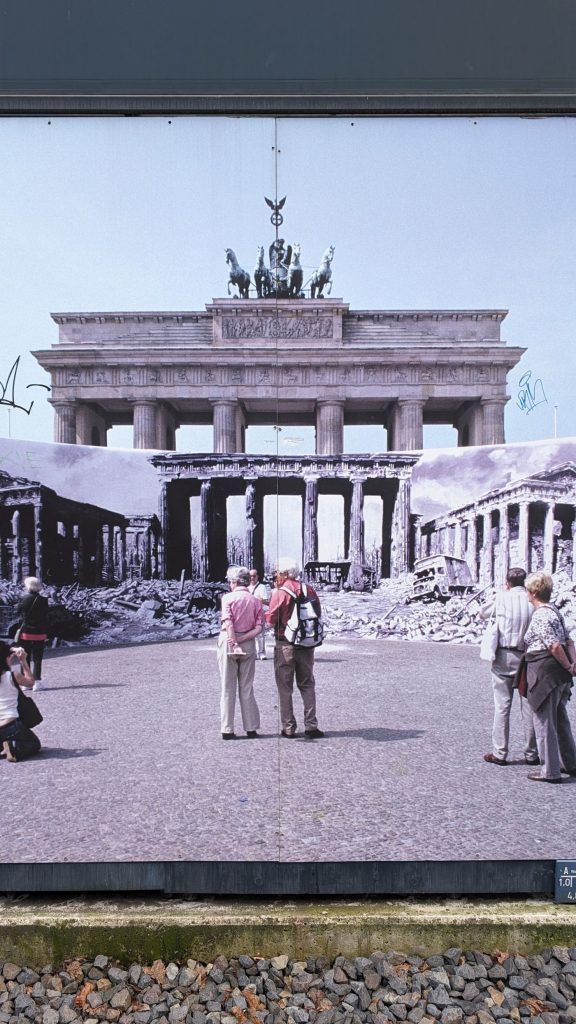
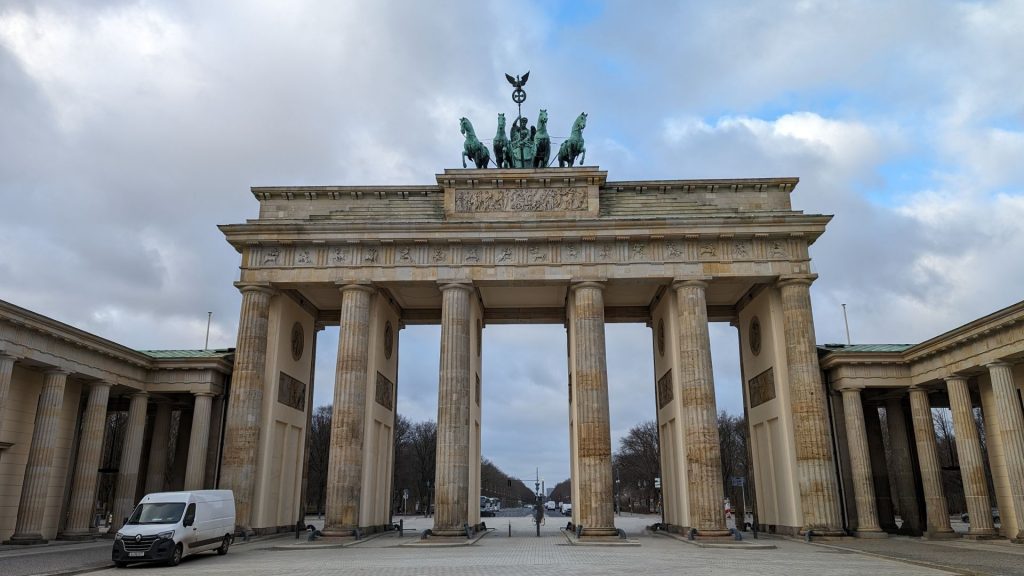
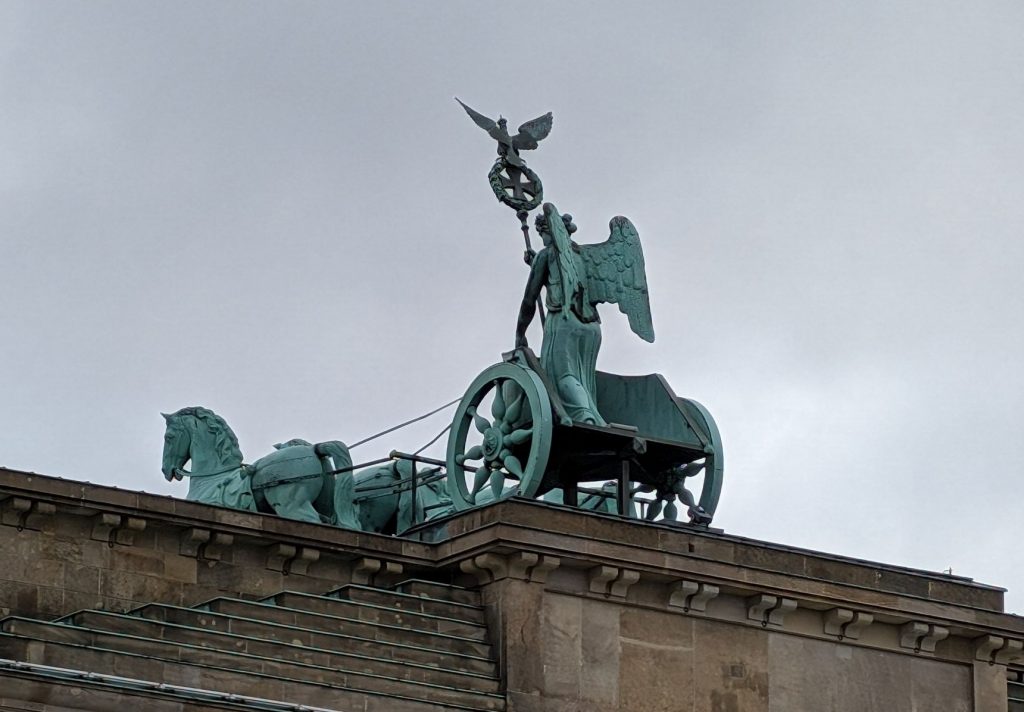
I just decided that this blog needs to be split into two because it is getting too long. The next blog contains tales of a horrifying visit, a confusing visit, and a fun visit.
